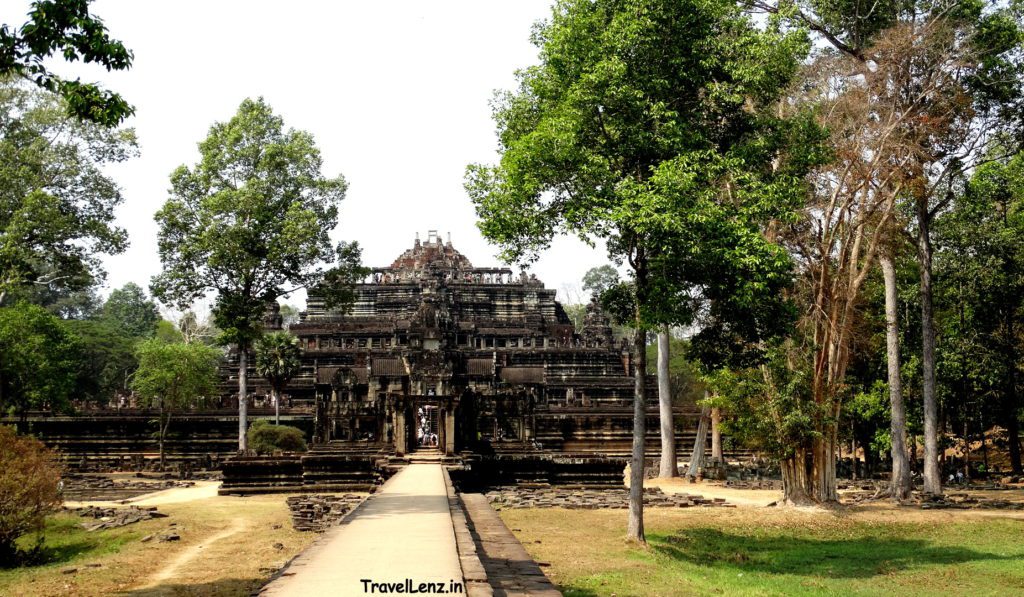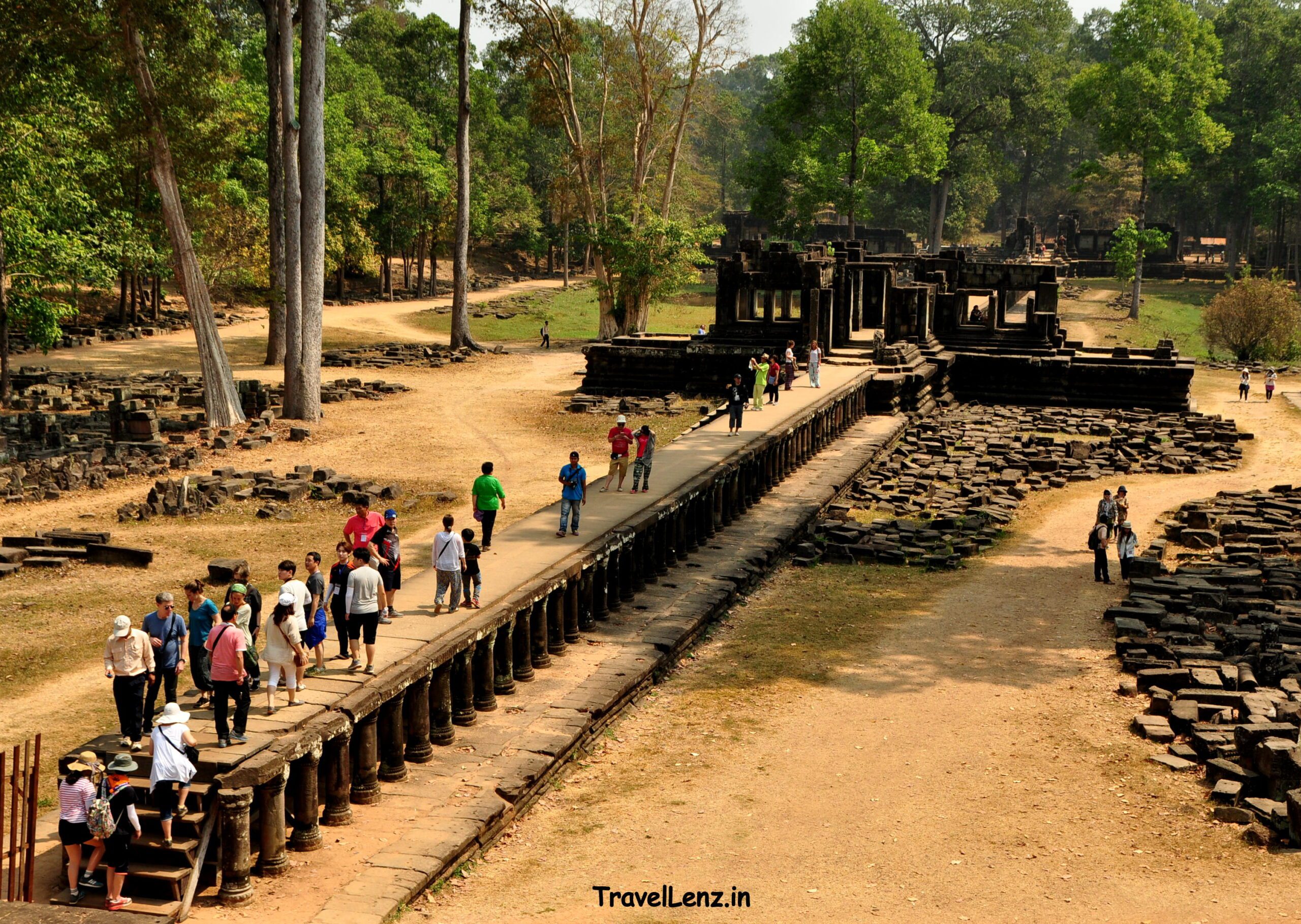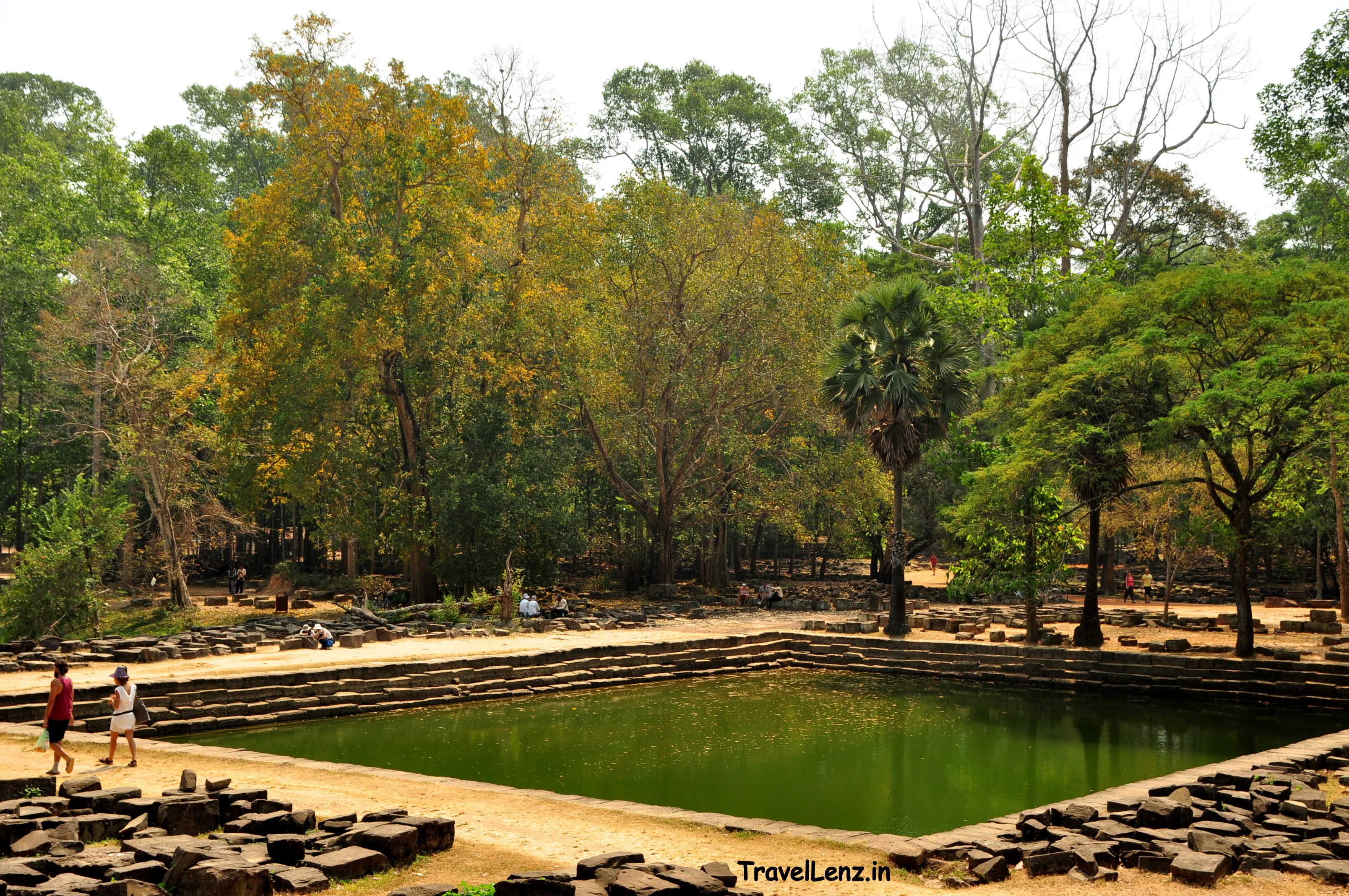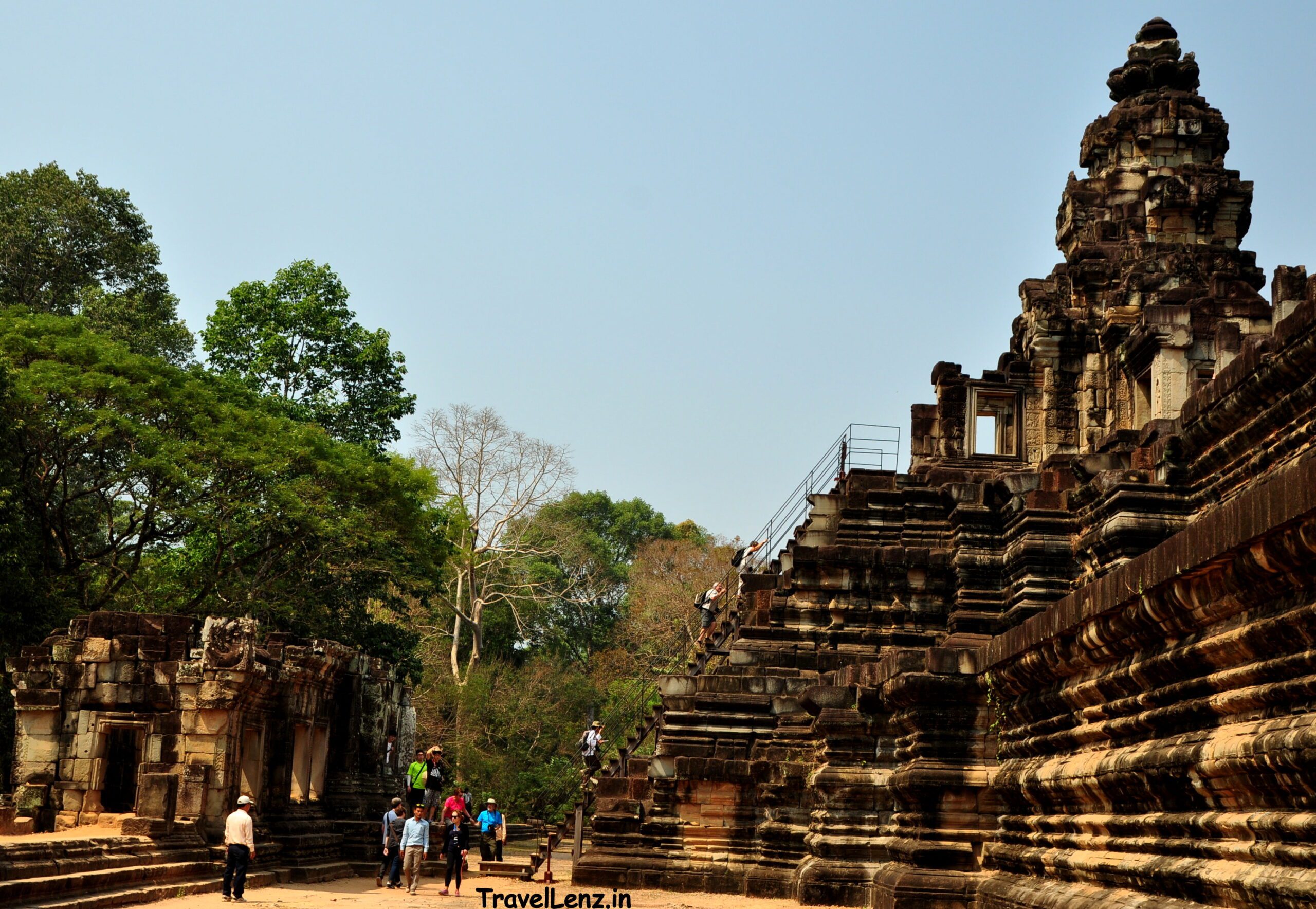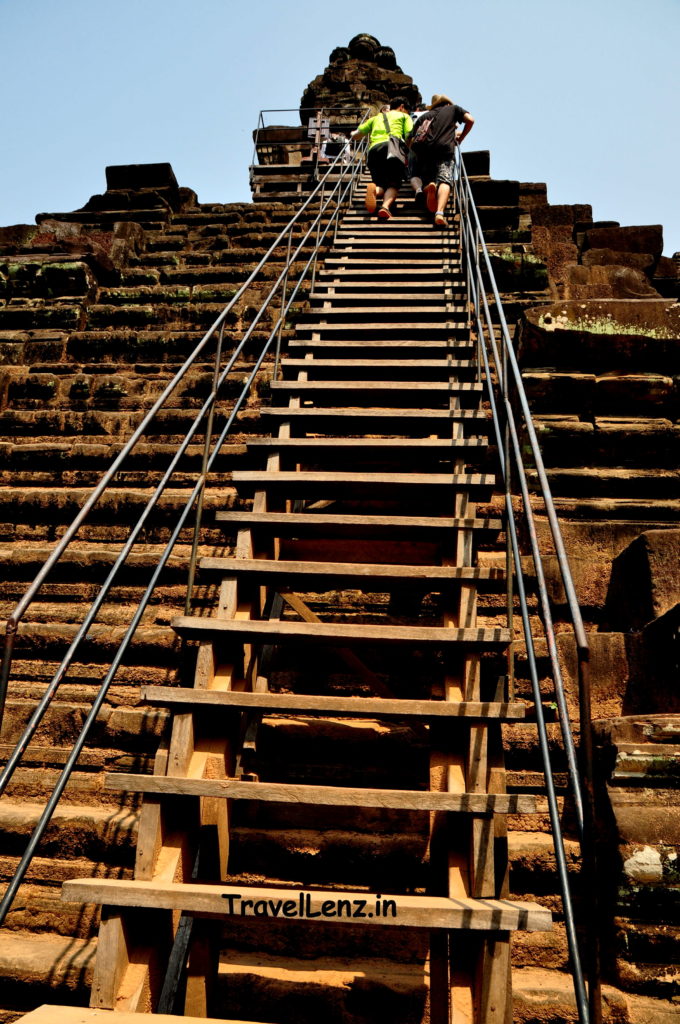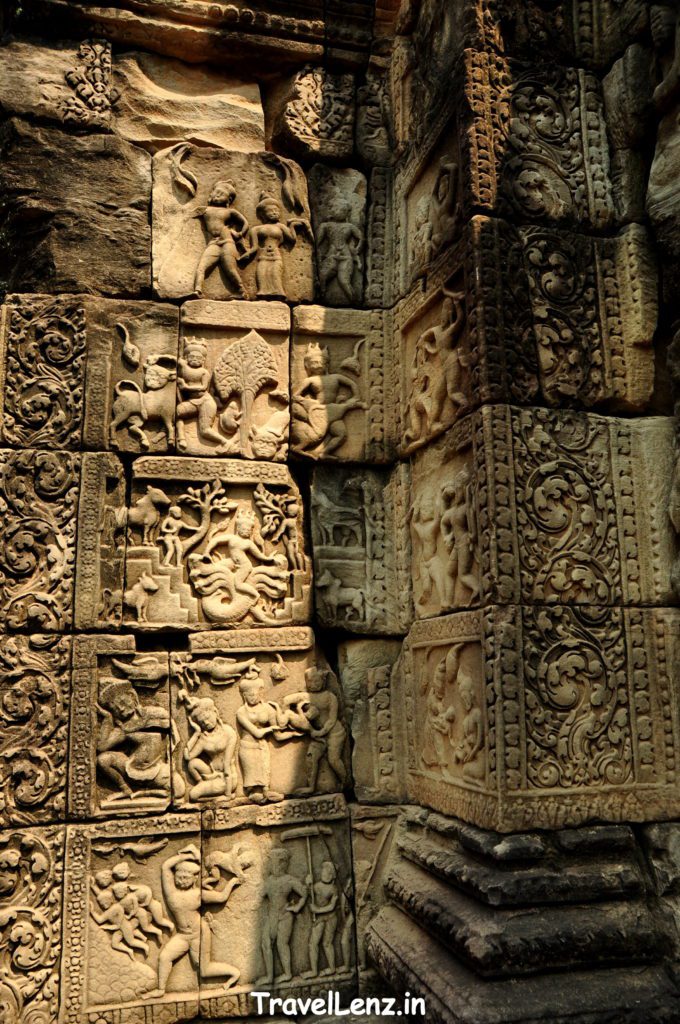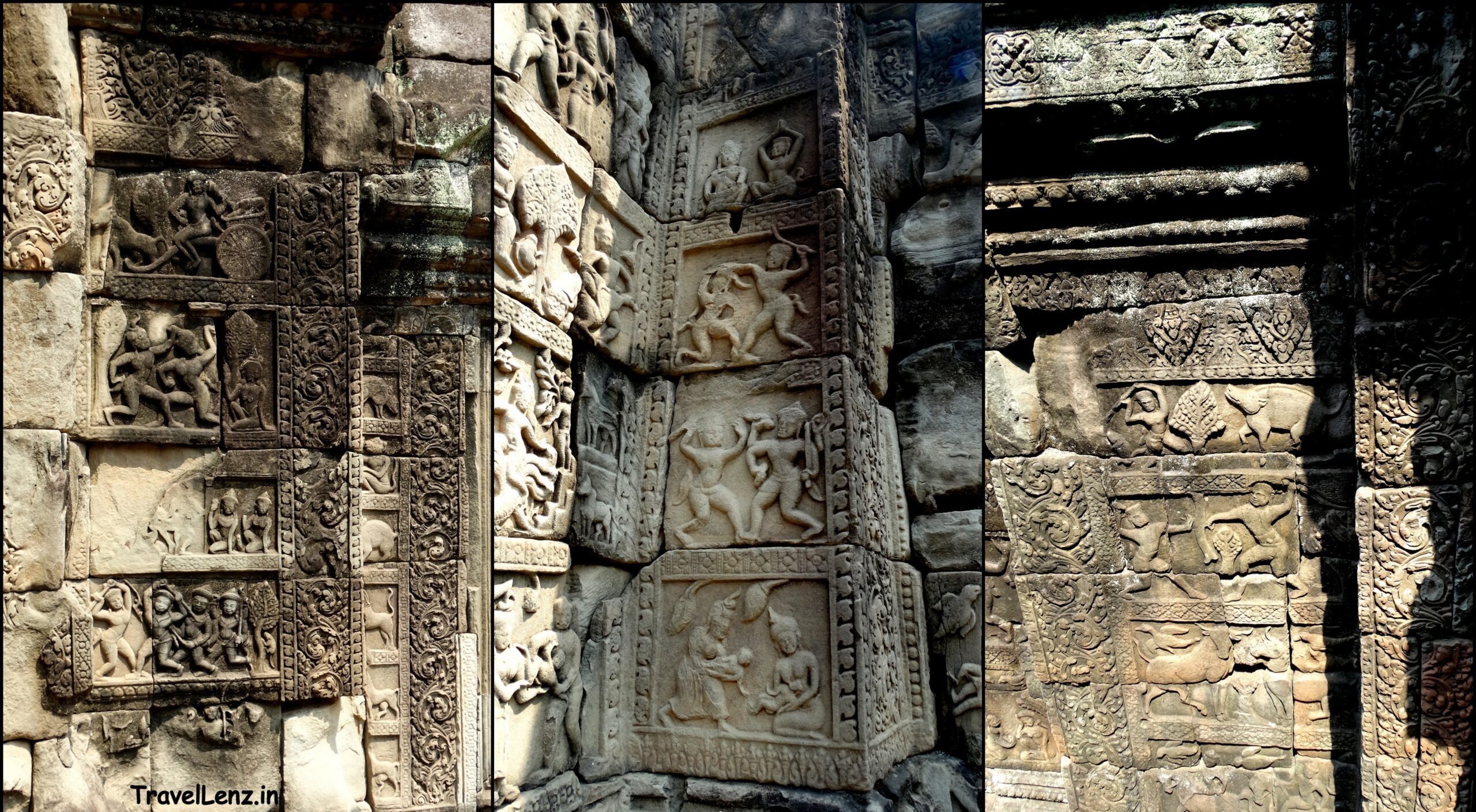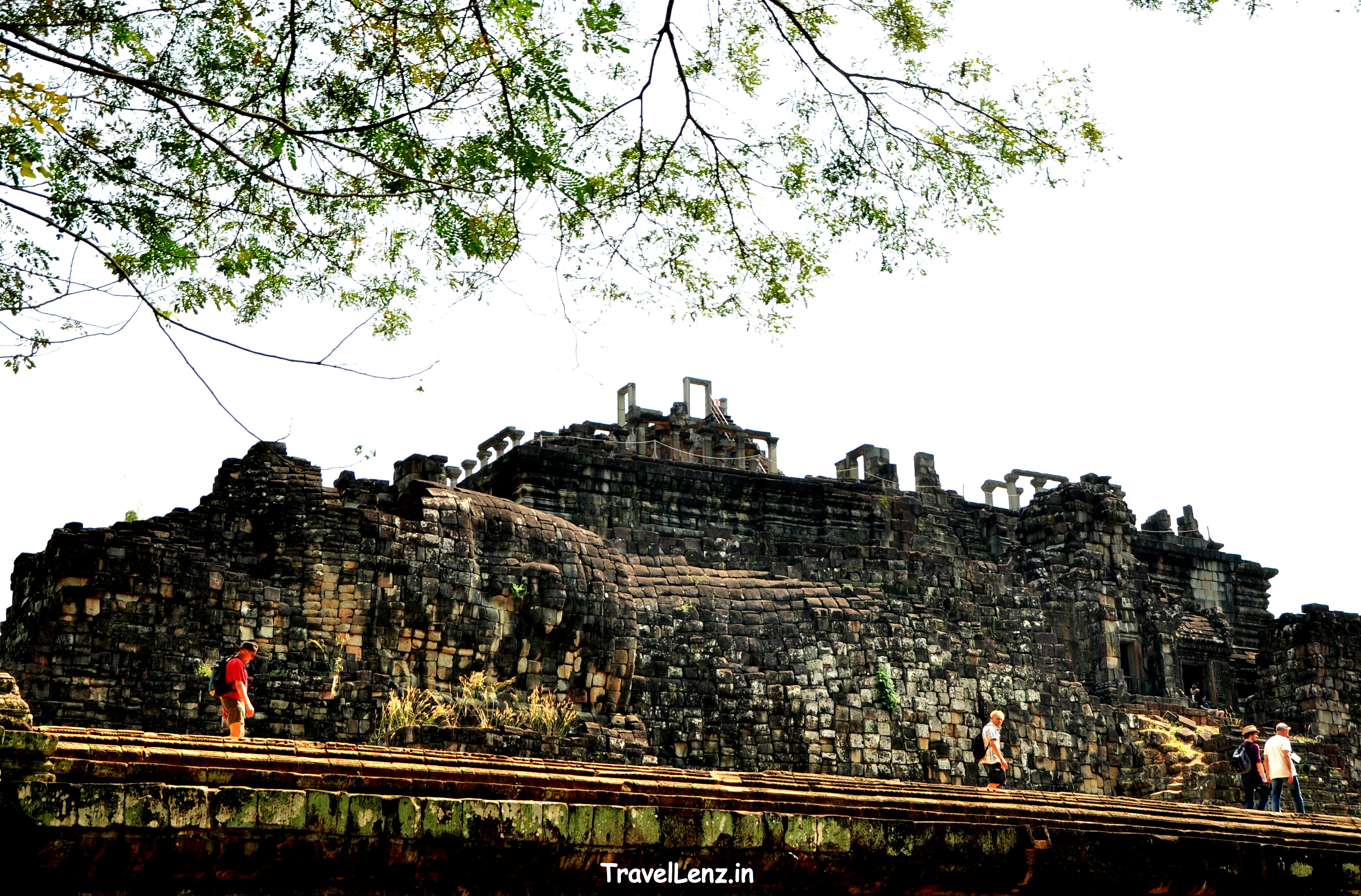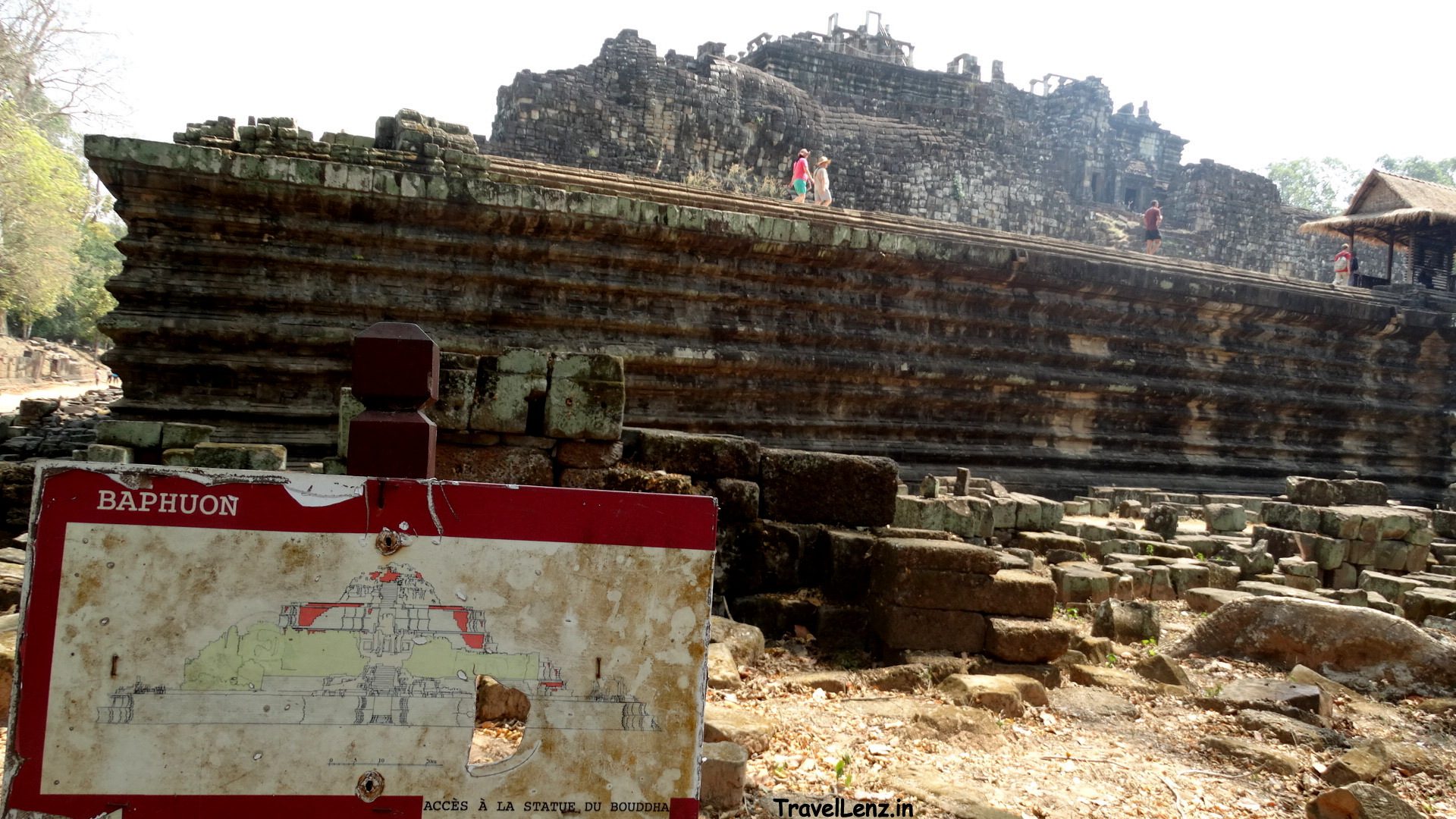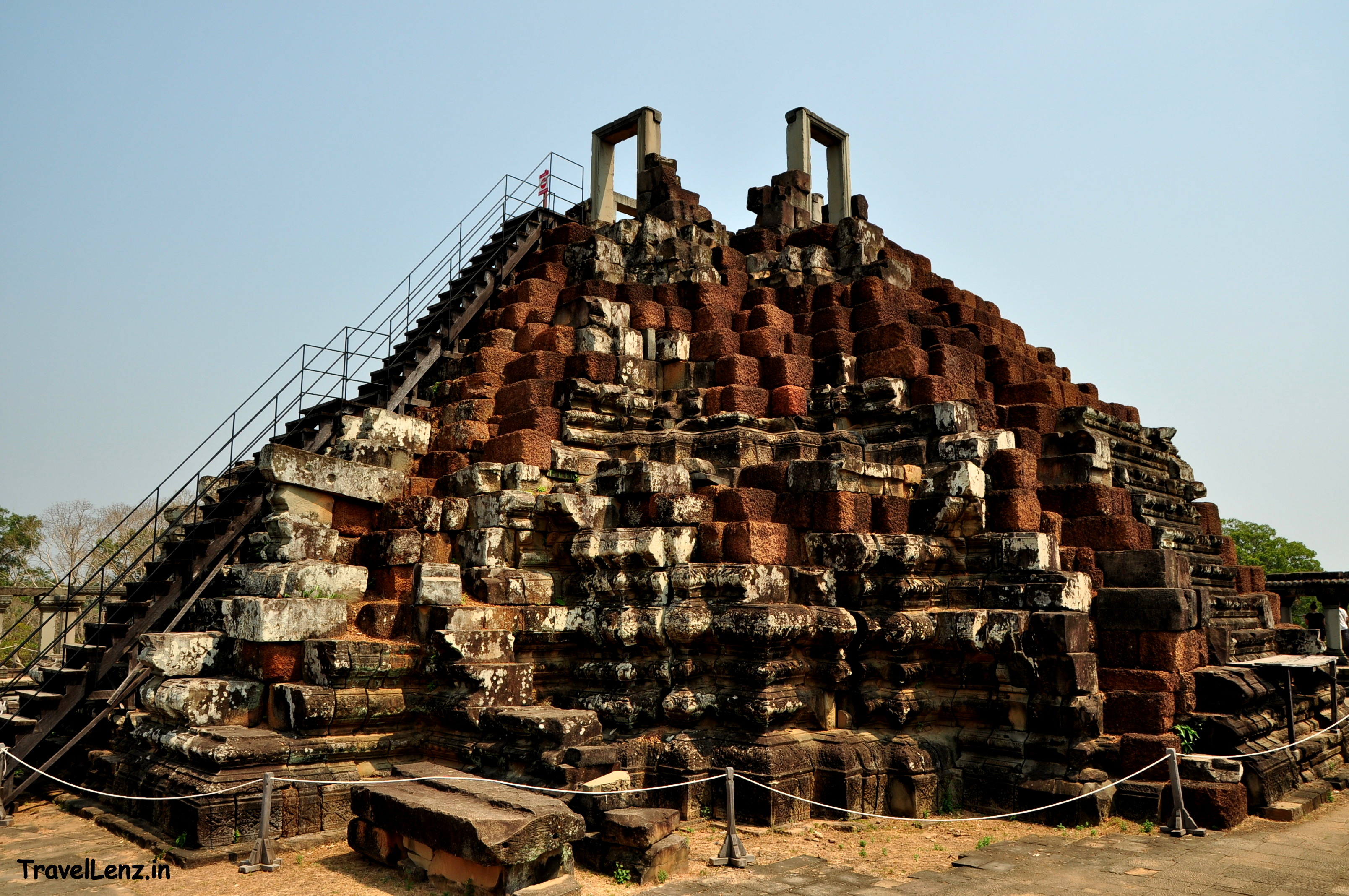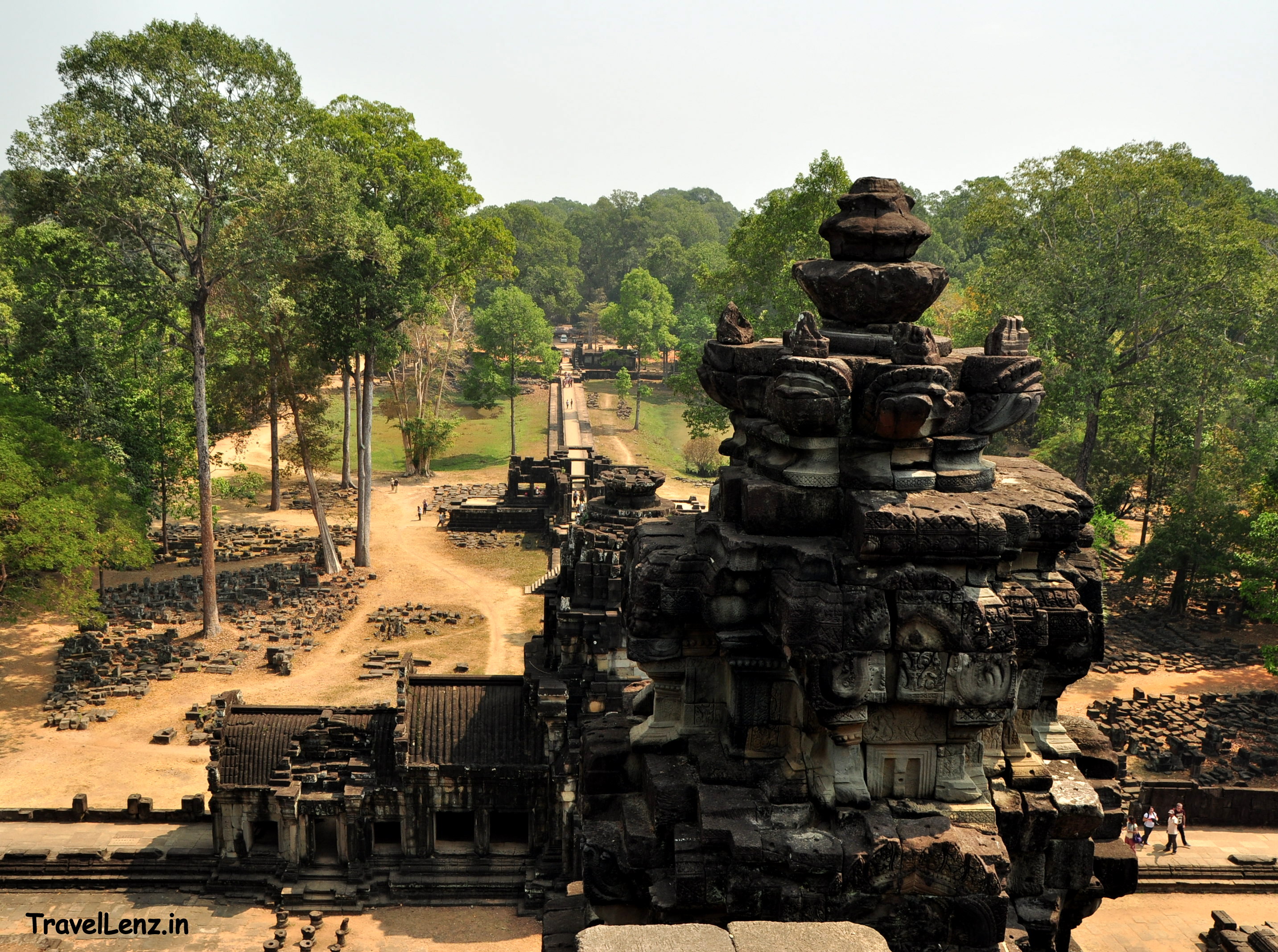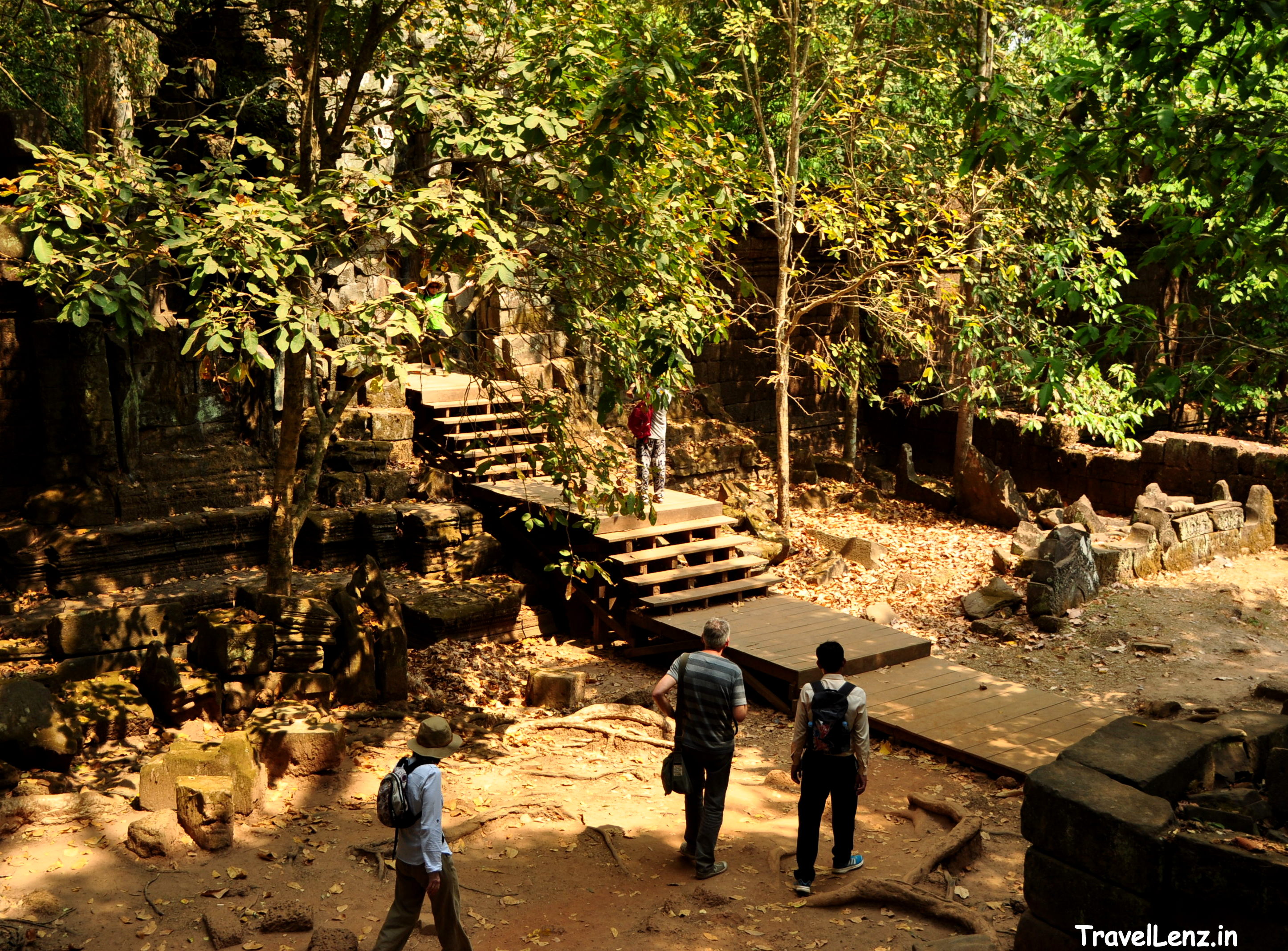Last Updated on May 20, 2021
From Bayon, after a five-minute ride, we reached the entrance of another magnificent temple – Baphoun. Tes left us here and said he’d meet us on the other side of the temple. He also asked us to see another temple – Phimeanakas – which was adjacent to Baphuon and to wait for him at the Terrace of the Elephants.
Baphuon – the three-tiered temple
Located 200 m northwest of Bayon, Baphuon looked almost like a stepped pyramid from a distance. Later we found out from Tes, that this temple had three tiers and was a representation of Mt Meru.
We passed under an outer gopura and walked along an elevated walkway. The elevated walkway was supported by pillars from beneath that reminded us of the pillars found in the temples in southern India.
There was a huge pond on the left side of the walkway. The central pyramid was quite high, a marker at the entrance mentioned that the height was 34 m. Each side of the pyramid had steep stone steps which were used to access the top tiers.
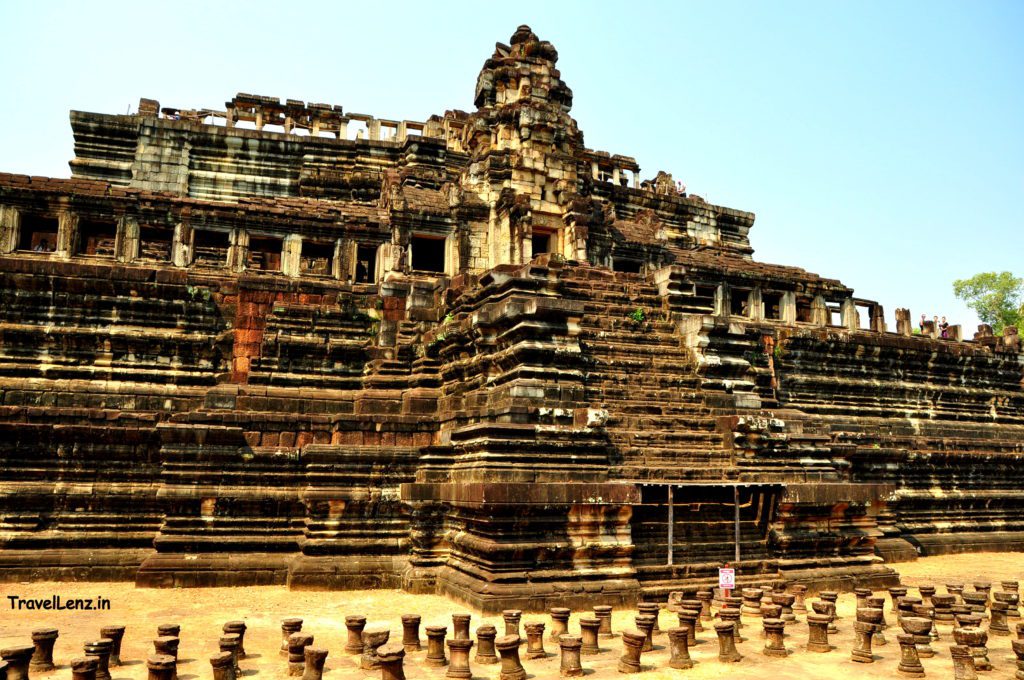
A makeshift wooden staircase with handrails was installed over the original ones on the eastern side as the stone steps were no longer safe for tourists.
We passed under the innermost gopura and climbed a few steps to reach the middle level of the pyramid.
Bas-reliefs
The wall panels were decorated with many carvings including scenes from the Indian epics – Ramayana and Mahabharata. We found scenes from the life of Lord Krishna – Kamsa snatching Devaki’s and Vasudeva’s children from the prison and killing them by throwing the kids onto the prison wall and a young Krishna fighting with the snake Kaliya and other demons.
There were various scenes from daily life – hunting scenes and a mother playing with her child. Other stories found on the stone were from Mahabharatha – Arjuna fighting with a boar and Lord Shiva disguised as a hunter
Sleeping Buddha
We walked in a clockwise direction moving from the east along the south and then onto the westside. Here, we came across a giant reclining Buddha. Actually, from a closer distance, it looked more like a pile of stones. In fact, it was only after we had got down from the pyramid and walked to the base, that we could make out that it was a reclining Buddha.
This temple, when built, was dedicated to Lord Shiva but was later converted into a Buddhist one. A part of the temple was demolished and the stones were used to build this Buddha image on the west end of the temple.
A small board did suggest that it was an unfinished Buddha.
The dilapidated condition of the temple made it a bit dangerous, but we did climb to the top level. We got a great view of the Royal Palace enclosure from the top.
The largest three-dimensional jigsaw puzzle in the world
Tes said that a massive restoration project, led by a team of French archaeologists, began in the 1960s. The idea was to dismantle all the stone blocks and then re-assemble the structure. For this, each piece was marked with a number, entered into a record book, and then carefully arranged at the temple site. Unfortunately, the project had to be abandoned when the civil war broke out in 1970, and the records needed to reconstruct the temple were destroyed by Khmer Rouge.
When the reconstruction restarted in 1995, the team were faced with a three-dimensional 3,00,000 piece puzzle with no record to match with.
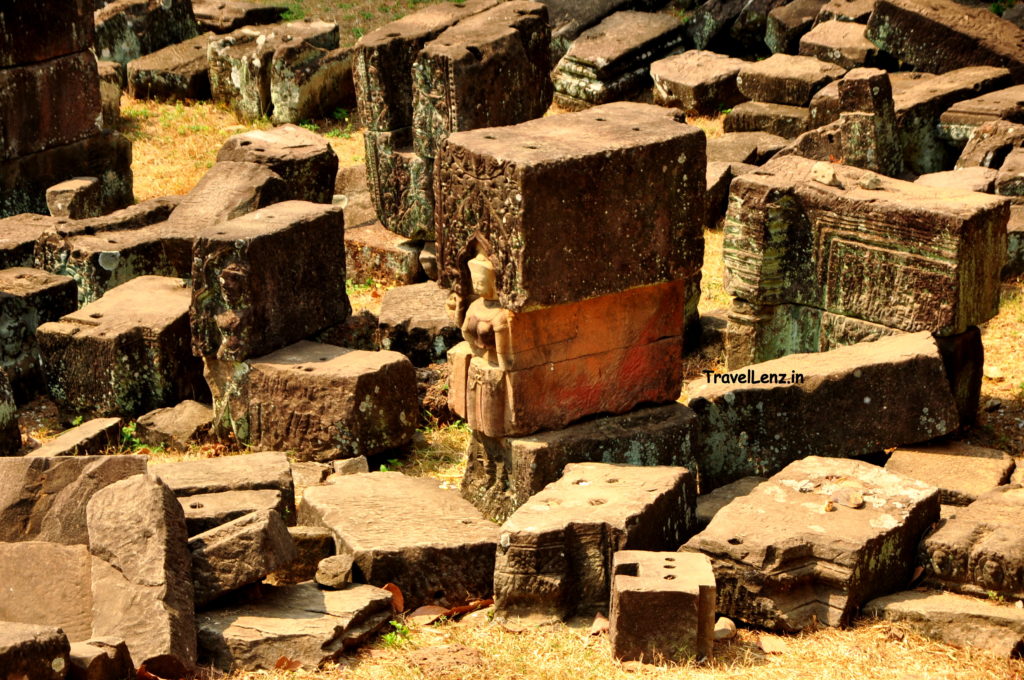
In 2011, the archaeologists could partially restore the temple. A few stone blocks that were not included in the restoration process now dot the forest floor surrounding the temple.
From Baphuon the walk to our next destination was through a small shaded area – low swaying trees with jungle vines cloaking the outer side. We climbed a few steps entered through a small stone entrance to reach our next destination, Phimeanakas.


